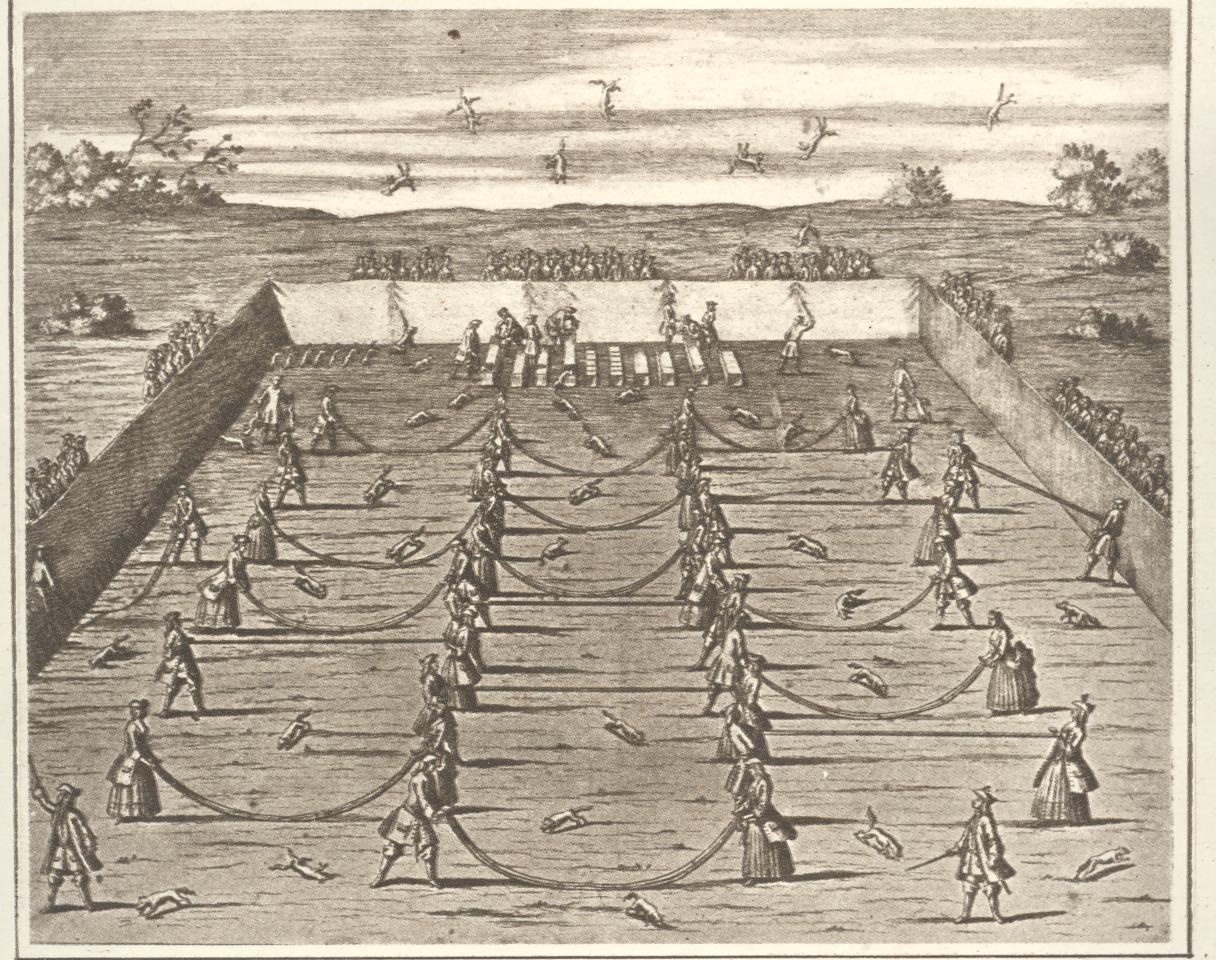
For the sake of entertainment, animals have been subjected to human cruelty for a very long time. The Romans imported exotic beasts like lions and elephants for gladiatorial displays in the Circus Maximus. Bear baiting was popular in England up until the 18th century, involving a bear chained to a post and forced to defend itself against dogs or humans. Spectacles like cock fighting and dog fighting have always been popular thanks to the gambling aspect. And if you haven’t heard about Octopus wrestling, that’s a thing too. There seems to be no end to human creativity or cruelty when it comes to seeking entertainment. Among the long list of senseless and unethical blood sports, “Fox Tossing” rates highly for both creativity and cruelty, with a hint of ridiculousness.
What is Fox Tossing?
Fox Tossing was a competitive blood sport, popular in parts of Europe, especially Germany, in the 17th and 18th Centuries. “Fuchsprellen” in German, translates to “fox bouncing”, a very accurate description of this “sport”.
How Does It Work?
Teams of two stood 6 to 7.5 metres apart, each player held on to the end of a long cloth sling or blanket. The playing space was enclosed; either by screens in an open field, or the courtyard walls of a castle.
Next, the animals were released and driven across the playing field. Once a fox was forced onto a sling, the players would pull hard at either end, causing the fox to be thrown up into the air.
The winners threw their fox the highest. Record throws were as high as 7.5 metres.

Was it dangerous?
Shockingly, this sport was deemed gentle enough for even women to play. But this sport always posed a significant risk to the players.
The terrified animals often attacked players in self-defence. The level of danger would vary depending on which animals were in play. Besides foxes; hares, badgers, wildcats, and even boars were often included in the competition. Wildcats were known to use their sharp claws to cling onto the sling or players indiscriminately. The boars posed a specific threat to women, often getting caught in the fashionable hooped skirts of the time.
…and the animals?
Sand or sawdust coated the playing field so that the animals wouldn’t be killed too quickly, but there was never any attempt to catch or save the animals. At the end of every tournament any injured animals left alive would be bludgeoned to death. In case there was any question, this sport was absolutely unethical and violent toward animals.
Who was doing this?
Most blood sports are popular among people with money and time on their hands, so naturally, fox tossing was all the rage among aristocrats. Upper class men and women enjoyed this horrible sport equally, and it was usually played in large numbers and organized as a tournament.
Sometimes the fox toss was even played as part of a masquerade. All parties would dress up in costume, including the animals. Men would dress as warriors or jesters, women as goddesses or fairies, and the poor animals would be decorated in ribbon and tinsel or dressed up as a likeness of a real person. As if getting tossed into the air and bludgeoned to death wasn’t torture enough.
Augustus II, Elector of Saxony and King of Poland, was an avid fox-tossing enthusiast. He was known to show off his strength by holding his end of the sling with one finger with two men tugging on the other. In 1747, this hot shot hosted a contest in Dresden where a total of 414 foxes, 281 hares, 39 badgers and one wildcat were tossed and killed.
Even the Holy Roman Emperor, Leopold II, was witnessed clubbing animals to death at a fox toss in Vienna in March 1672.
Is it still practiced?
Thankfully the barbaric and dangerous sport of fox tossing has fallen out of vogue and is now nothing but a distant memory, that seems more like a weird nightmare.
Although other blood sports continue to be practiced today, the Victorian era brought a trend toward animal welfare in the Western world. As a supporter of the Society for the Prevention of Cruelty to Animals, Queen Victoria granted the organization royal patronage in 1840. It is known today as the “RSPCA” in England, R for Royal of course.
